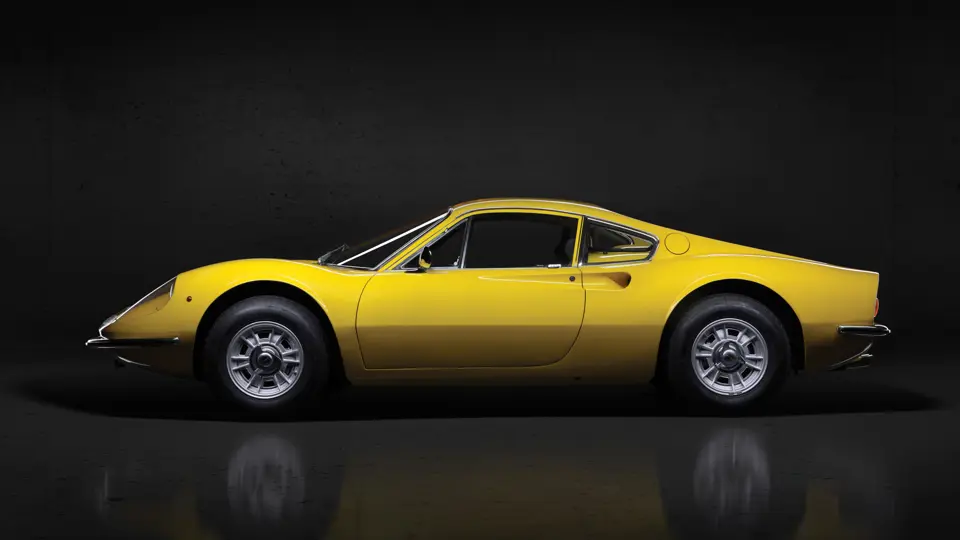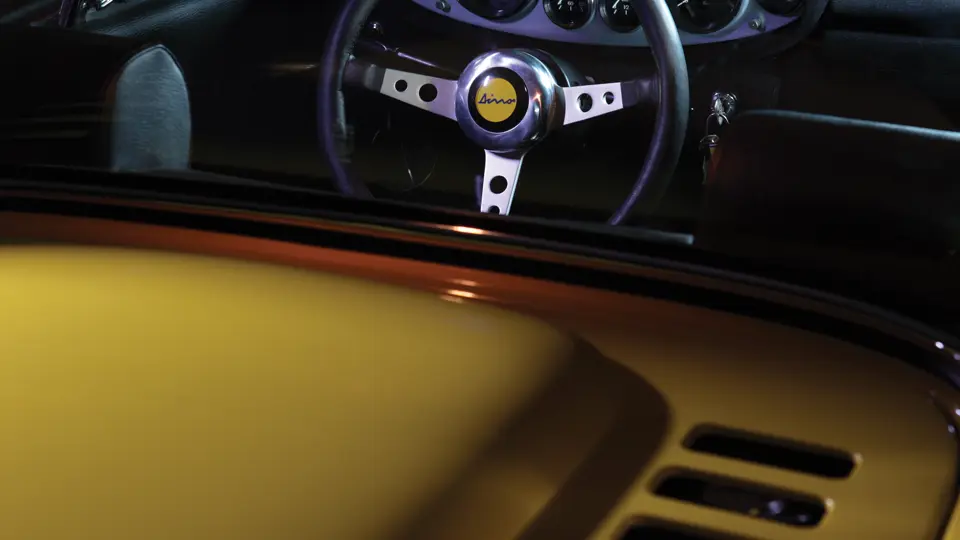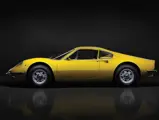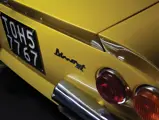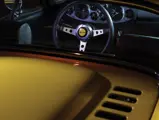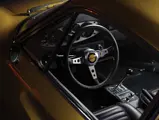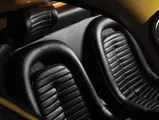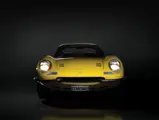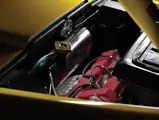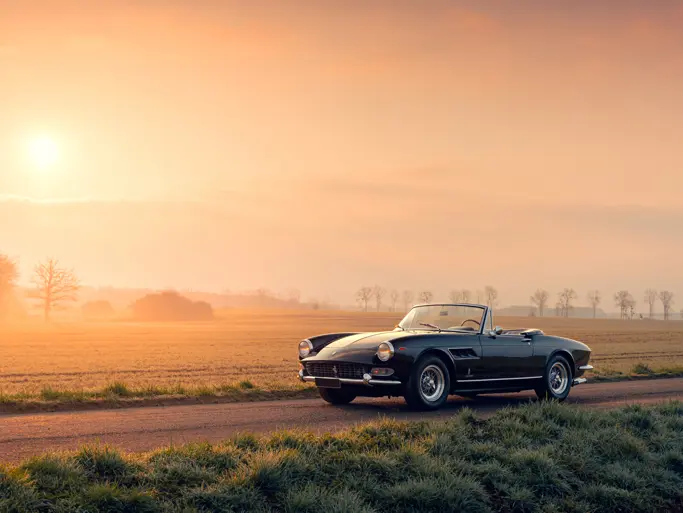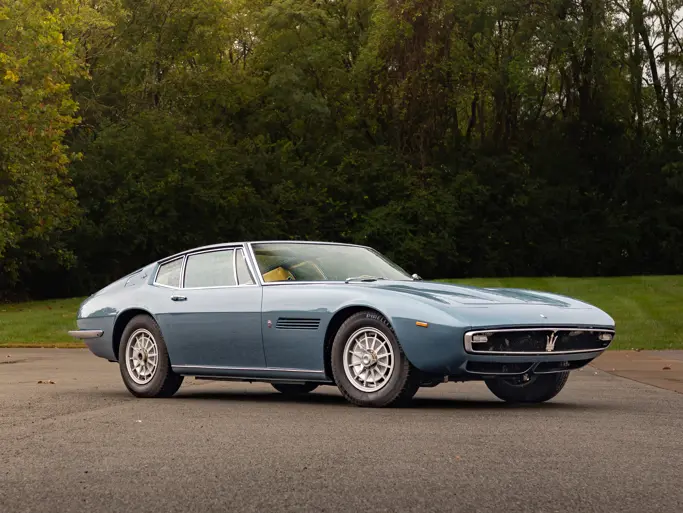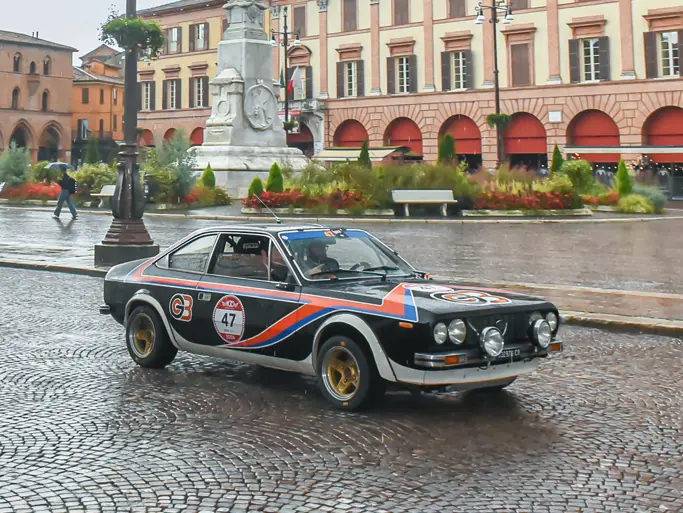
1970 Ferrari Dino 246 GT 'L-Series'
{{lr.item.text}}
€347,200 EUR | Sold
{{bidding.lot.reserveStatusFormatted}}
- One of 357 early ‘L-Series’ cars with 206 GT styling features
- Four owners from new; has always remained in Torino
- Restored in the ownership of Dino expert Luciano Bertolero
- Original Italian registration and black plates
- Submitted for Ferrari Classiche certification
- Une des 357 premières voitures de la Série L dotées de traits stylistiques de la 206 GT
- Quatre propriétaires depuis l’origine ; n’a jamais quitté Turin
- Restaurée aux mains du spécialiste Dino, Luciano Bertolero
- En plaques italiennes d’époque (noires)
- Soumise à la certification Ferrari Classiche
195 bhp, 2,418 cc DOHC V-6 engine, five-speed manual transmission, four-wheel independent suspension with A-arms, coil springs, and telescopic shock absorbers, and four-wheel ventilated disc brakes. Wheelbase: 2,350 mm
Moteur V-6 à 2 ACT par banc, 2 418 cm3, 195 ch, boîte de vitesses manuelle à cinq rapports, suspension à quatre roues indépendantes avec triangles superposés, ressorts hélicoïdaux et amortisseurs télescopiques, quatre freins à disque ventilés. Empattement: 2 350 mm
The Dino model, originally introduced as a Ferrari co-brand created in tandem with Fiat, was a ground-breaking offering that established numerous firsts for Ferrari. It was the first Maranello production car to feature rear-mid engine placement and the first to employ a V-6, ideas both drawn from the 206 S and SP prototype race cars of the mid-1960s. Enzo Ferrari’s son, Dino, had been one of the engine’s principal proponents prior to his passing in 1956 and thus was honoured as the new car’s namesake.
The engine’s racing pedigree was only part of the production Dino’s appeal though, as the new 206 GT was clothed in dazzling Pininfarina-designed coachwork. The body, built by Scaglietti, reconciled curvaceous 1950s styling with the wedge motifs that would soon dominate sports car design. The Dino also demonstrated impressive balance during tight handling, thanks to its near-even weight distribution, a dividend of the race-proven rear-mid engine placement.
The first debut of the concept form took place at Geneva in March 1965 as the 206 S Speciale, and the Dino entered series production in 1967 with the 206-specification 2.0-litre engine. After a short run of 150 cars, the 206 GT was updated in 1969 with a larger 2.4-litre motor, a displacement that remained unchanged until the Dino’s discontinuation in 1974. The 246 GT was ultimately built in three separate iterations, respectively known as the L-, M-, and E-Series.
The L-Series served as the direct successor to the 206 GT and was built from March of 1969 until October of 1970, accounting for only 357 total examples and considered by connoisseurs as the “bridge” between the 206 and 246 GTs. As such, these early series cars retained many visual features normally associated with the original 206, arguably making it the purest form 246 GT produced during the model’s run. Many details abound which exemplify this notion, such as the more purposeful 206-style seats and dash, centre-lock knock-off wheels, a deeper passenger footwell with folding footrest, a wood-rimmed Nardi steering wheel, and numerous other small distinctions. Perhaps most significantly, the L-Series cars featured lightweight alloy doors and decklids, a contrast to the heavier all-steel bodies of the later M- and E-Series cars.
This desirable late-production L-Series Dino 246, chassis number 01040, is recorded by Ferrari historian Jarrett Rothmeier as having been completed by the factory on 27 August 1970. It was finished in Rosso Chiaro (20-R-190) with a Nero (161) interior and was supplied within the next few days through Italcar S.p.A. to Holtim Italiana S.A.S., a real estate and construction management concern in Torino, where it was used by Masera Fernando until 1973.
The car next passed to the Di Lorenzo family, who kept it for 10 years, and then to Gallina Maria, also of Torino, meaning that it has remained within the city since new. In more recent times, the Dino has been one of the prized possessions of Luciano Bertolero, an esteemed Ferrari expert who dedicated to this 246 GT five years of painstaking restoration work.
The car is now finished in Giallo Fly, and it retains its original Italian registration and black number plates, TOH5 7767. The current owner notes that the car has been submitted for Ferrari Classiche certification, and it is offered with a copy of its original Italian libretto.
This car, an attractive example of one of the most desirable Dino variants, will undoubtedly happily fill a gap in the collection of the most seasoned Ferrari connoisseur.
Le modèle Dino, introduit initialement sous une marque sœur, mais indépendante de Ferrari et créée en collaboration avec Fiat, fut une étude originale dès le début qui représenta plusieurs « premières » pour Ferrari : première voiture de Maranello dotée d’un moteur central arrière et première à moteur V-6, deux concepts issus des prototypes de compétition 206 S et SP du milieu des années 1960. La mémoire du fils d’Enzo Ferrari, Dino, qui avait été un des principaux promoteurs de cette architecture moteur avant sa disparition en 1956, fut donc honorée par l’usage de son surnom comme marque de la nouvelle voiture.
L’héritage sportif du moteur ne constitua qu’une partie de l’attrait de la Dino de production, car la nouvelle 206 GT fut habillée d’une spectaculaire carrosserie signée Pininfarina. La caisse, construite par Scaglietti, unissait le style arrondi des années 1950 aux formes en coin qui allaient s’imposer dans le domaine de la voiture de sport. La Dino fit preuve aussi d’un impressionnant équilibre dans les courbes serrées grâce à une répartition des masses presque égale entre les trains, un legs du positionnement central arrière du moteur très apprécié en compétition.
Les tout débuts du concept eurent lieu à Genève en mars 1965 sous la forme de la 205 S Speciale et la Dino de production apparut en 1967 avec le moteur deux litres aux spécifications 206. Après une première série de 150 voitures, la 206 GT fut refondue en 1969 en recevant un moteur plus gros, de 2, 4 litres, cylindrée qui ne changea plus jusqu’à l’arrêt de la Dino en 1974. La 246 GT fut finalement construite en trois variantes, respectivement, les séries L, M et E.
La série L qui succéda directement à la 206 GT fut construite de mars 1969 à octobre 1970 pour un total de 357 voitures, considérées par les connaisseurs comme intermédiaires entre les 206 et les 246 GT. Sous cette forme, ces premières voitures de série conservaient de nombreuses caractéristiques visuelles normalement propres à la 206 originale qui en font probablement la forme la plus pure de toute la production du modèle. De nombreux détails abondent qui confortent cette idée comme les sièges et la planche de bord type 206 plus fonctionnels ; les roues à serrage central, le remplissage d’essence extérieur, un plancher passager plus profond avec repose-pieds repliable, un volant Nardi à jante en bois et plusieurs autres petites différences. Plus significatif peut-être, les voitures de la série L bénéficiaient de portes et de capots en aluminium à la différence des carrosserie tout acier plus lourdes des séries M et E ultérieures.
Cette très désirable Dino 246 de la fin de la série L, châssis n° 01040, est répertoriée par l’historien de Ferrari, Jarrett Rothmeier, comme ayant été achevée à l’usine le 27 août 1970. Peinte en Rosso Chiaro (20-R-190) avec intérieur noir (161), elle fut livrée quelques jours plus tard via Italcar SpA à Holtim Italiana S.A.S., une firme de promotion immobilière de Turin où elle fut utilisée par Masera Fernando jusqu’en 1973.
La voiture passa ensuite aux mains de la famille Di Lorenzo qui la conserva dix ans, puis à celles de Gallina Maria, également à Turin, si bien qu’elle ne quitta jamais cette ville. Plus récemment, la Dino fut une des voitures le plus appréciée par Luciano Bertolero, spécialiste réputé de Ferrari, qui consacra à cette 246 GT cinq années de travail méticuleux.
Peinte désormais en Giallo Fly (Jaune Ferrari), elle a conservé son immatriculation italienne d’origine et ses plaques noires TO H5 7767. Le propriétaire actuel précise que la voiture a été soumise à la certification du Ferrari Classiche et qu’elle est offerte avec une copie du libretto d’origine.
Exemple très séduisant d’une des plus désirables variantes de la Dino, cette voiture ne peut que combler un manque insupportable dans la collection d’un amateur de Ferrari des plus avertis.




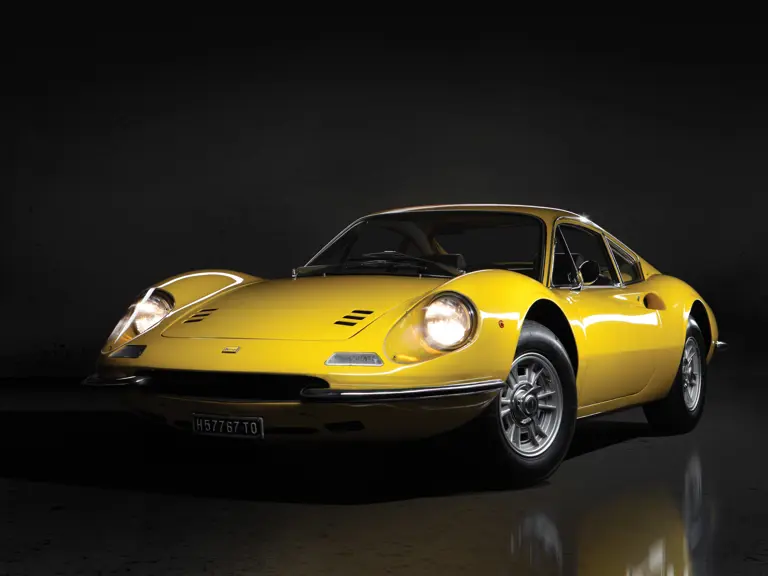
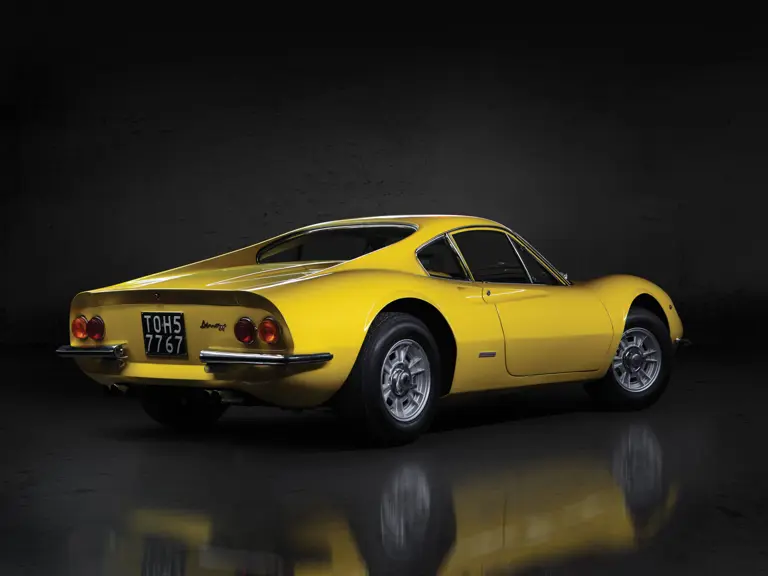
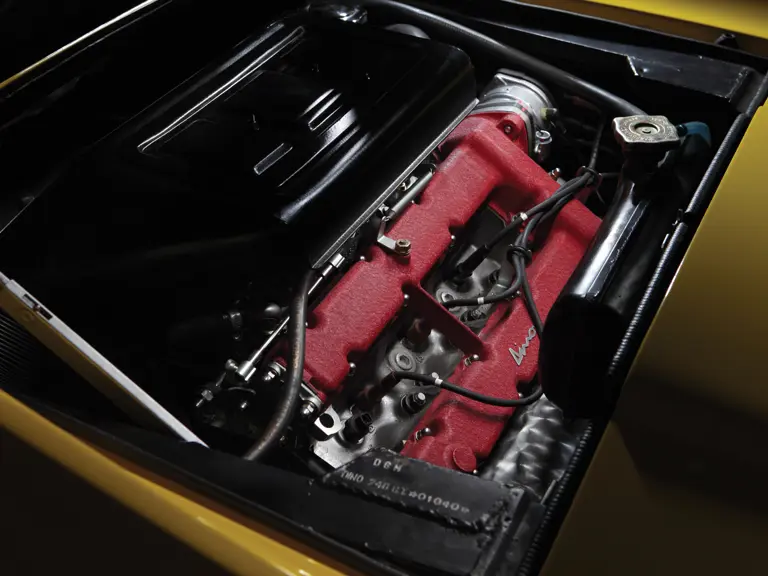
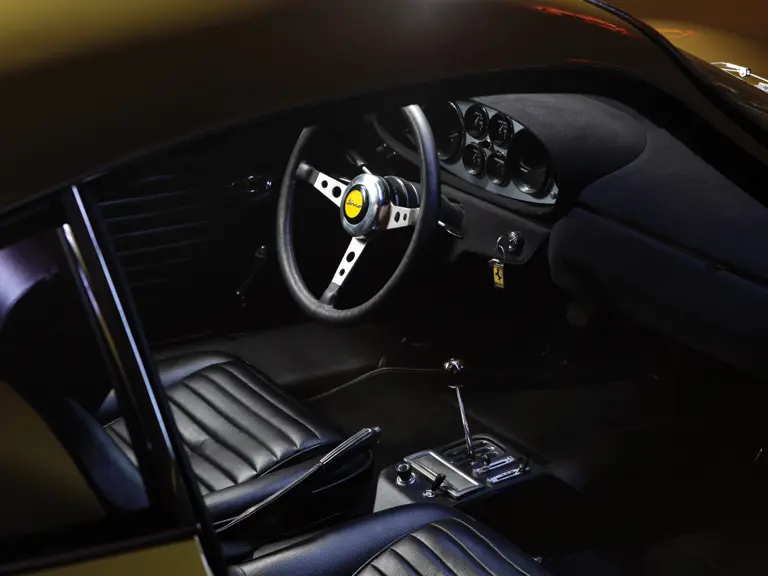
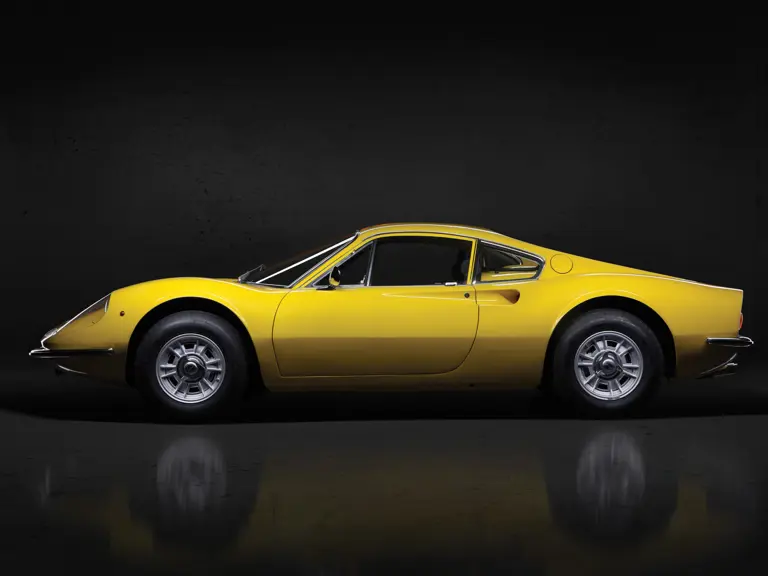
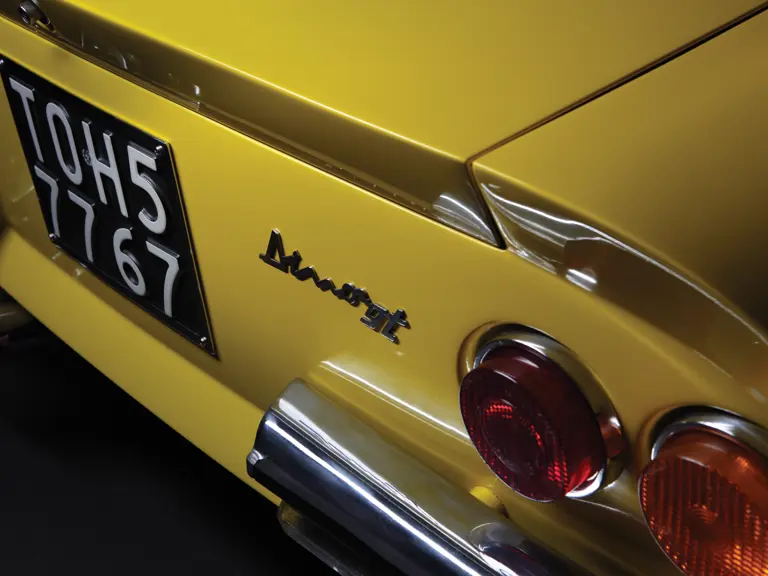
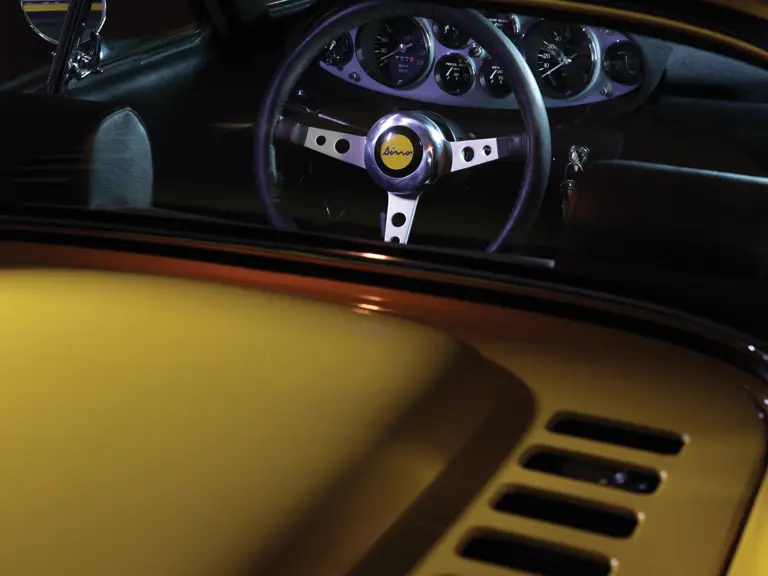
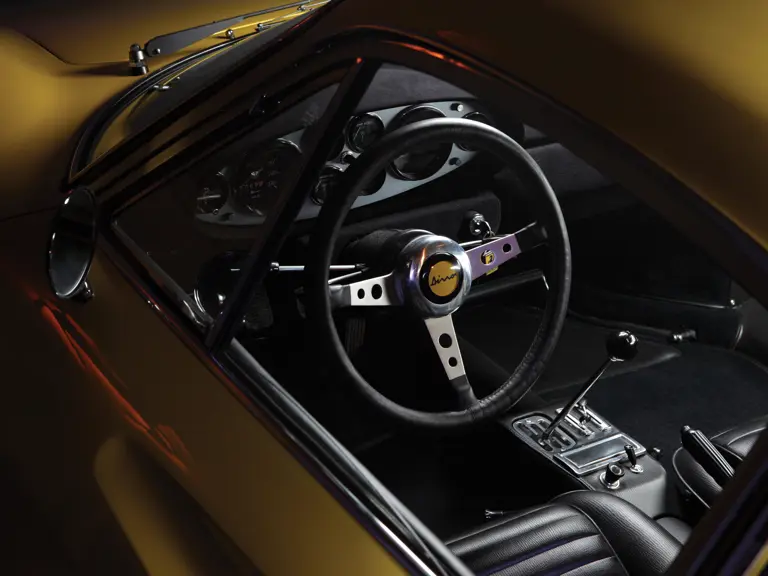
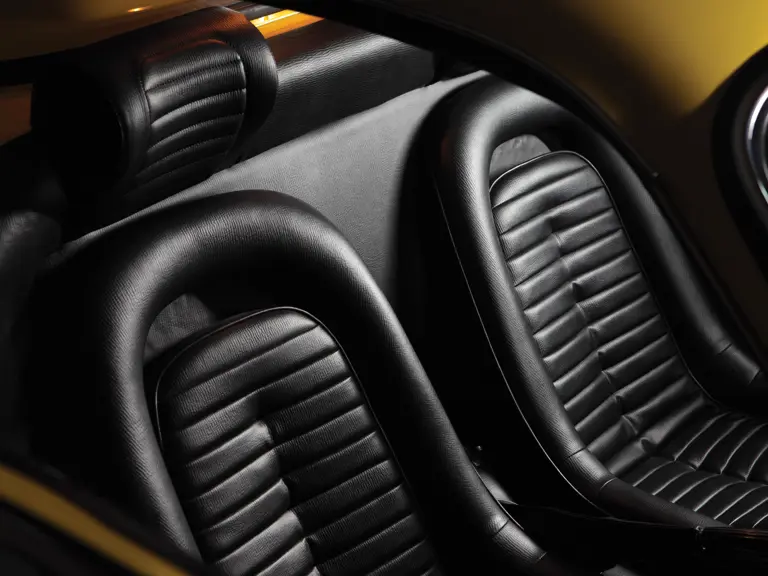
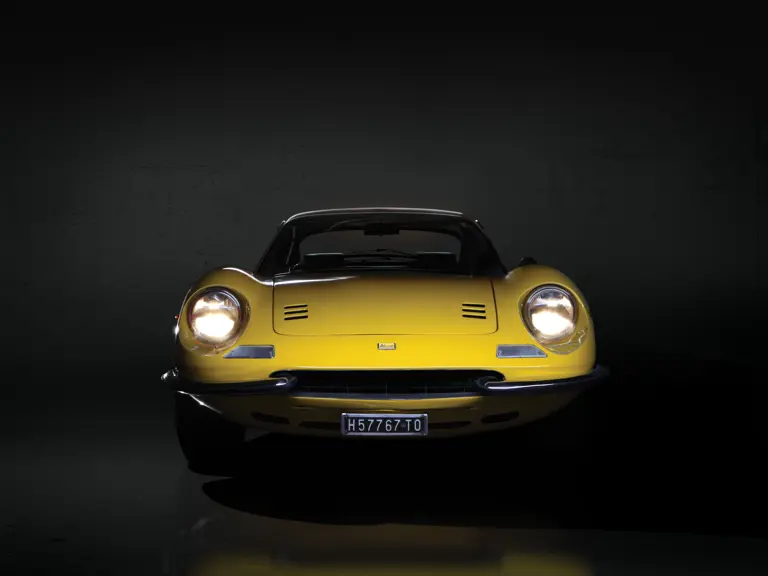
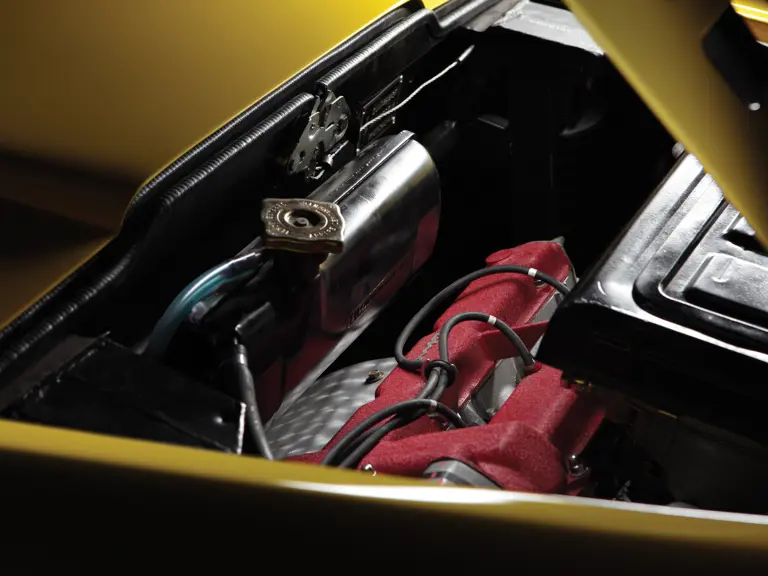
 | Paris, France
| Paris, France
